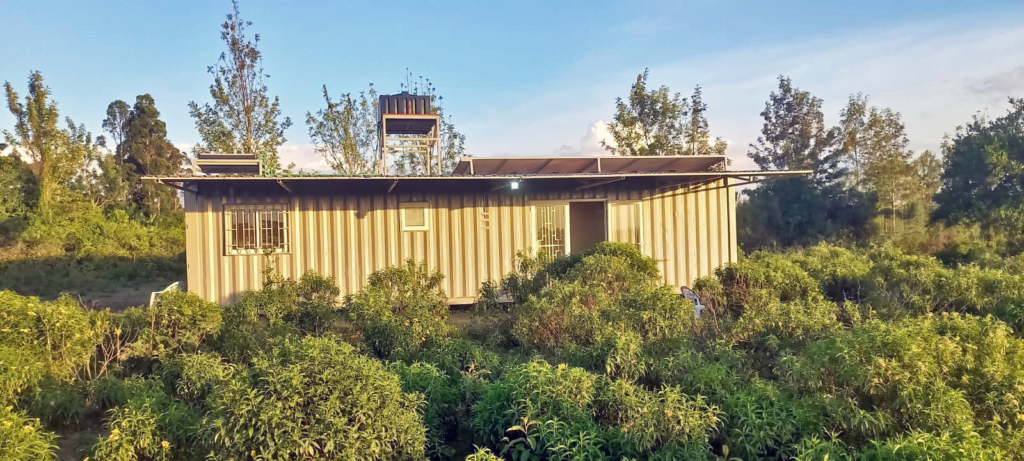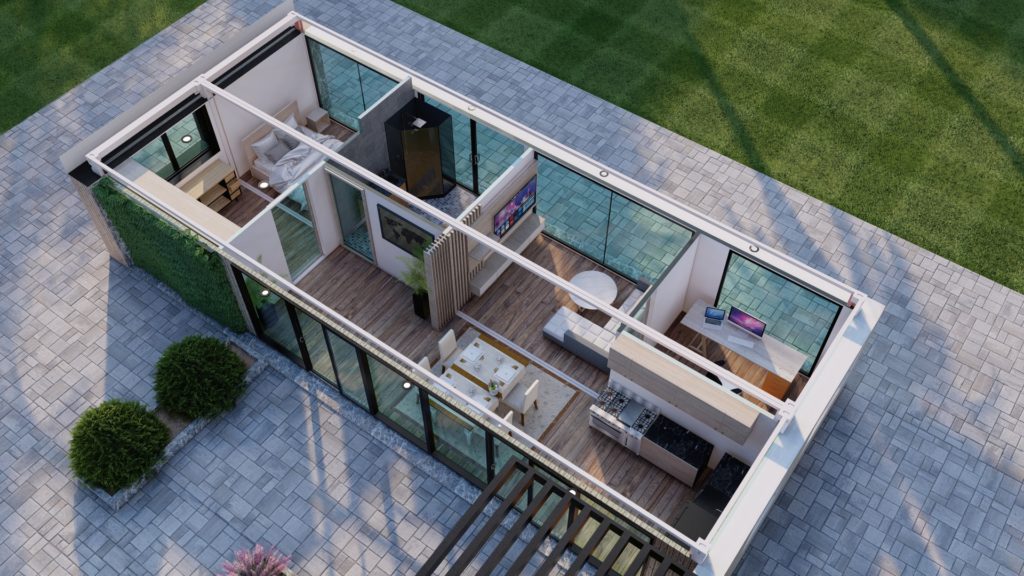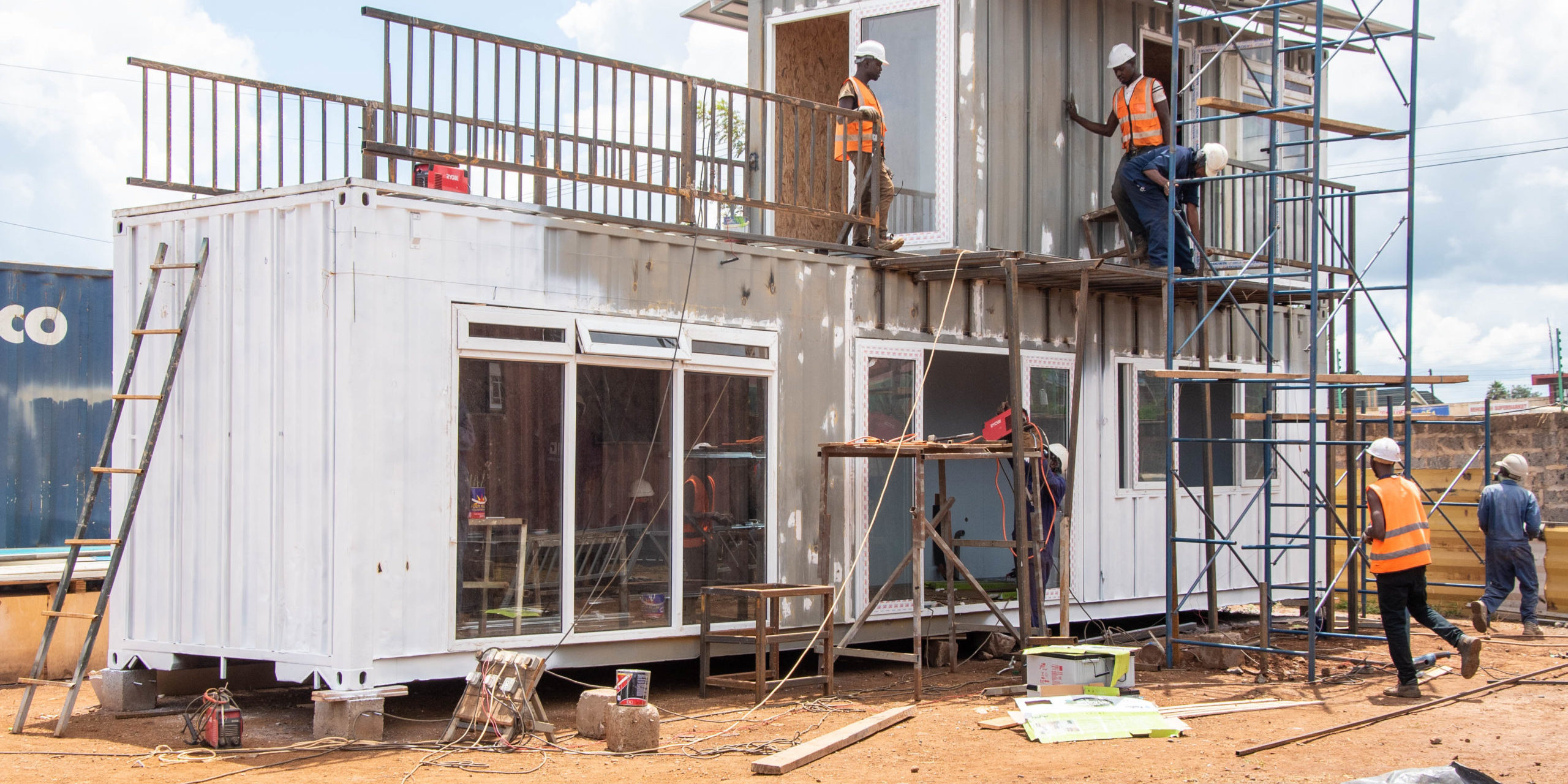The real estate industry is seeing major shifts with the ever changing and improving technology that seeks to make work easier, faster and more reliable. Modern construction technologies have considerably lowered construction costs and duration as well us brought up exciting designs. The luxurious modular designs hardly show the primary container materials used for the base.
The new houses are made of design mostly fabricated and prepared at a factory before being transported to site for installation, assembly and finishing works. This lowers the construction time extensively making people opt for them to avoid the long periods and materials loss risks in traditional construction.
The trends are now penetrating the market with improved understanding of technology and access to information by Kenyans on their advantages. Developed countries widely accepted the technology that is now spreading fast in all spheres of construction ranging from malls, residential, schools, remote camps and holiday homes among others.

Simplified Steps for Setting up Container Homes in Kenya
To add more detail on the process of making container houses in Kenya, here is a brief of procedures:
- Upon making the decision to have a container based house for any needs, one starts with identifying space and looking for relevant approvals for construction from local authority for temporary structure. This is usually easy to get and does not have a long waiting period for approval.
- Secondly one will need to contact reliable construction company that will guide them through designs, requirements and budget allocation. They will also advice on the duration it will take to complete, help utilize available space well and stat fabricating the containers to designated designs at their factory upon agreeing on design, cost, material and duration.
- Homebuyers with unique designs and plans can work with an in-house architect at the prefabs factory or they can hire their own architect to design their house. The company will then prepare round for installation and transport the fabricated products to the site for finishing the project as per client directives.

Factors to Consider when setting up a Container House in Kenya
1. Ground works. This basically refers to preparation of the site to allow positioning of the fabricated container as well as give it a good surround, drainage and court.
2. Finishes. Exterior and interior finishes are made using modern materials like gypsum, wooden/aluminum composite cladding, including fitting cabinets, siding, vanities and backsplashes. The interior and exterior walls are also painted as per design.
3. Body Fabrications. This is the cutting and welding of the container body according to design to enable fixing of other parts and rooms fittings.
4. Wiring and Plumbing. Once the house structure is put in place, electrical wiring, plumbing, and drywall – including the ceiling – are installed.
5. Roofing. The roofing system can either be set on top of the container or it can be attached to the roof on-site once the rest of the house has been assembled according to design.
6. Transportation. Finished containers that are now houses complete with windows, doors, fittings and all required adjustments by design are then transported to the owners site where installation and final adjustments are done before handing over to the client. This is done by use of heavy lifting cranes and duty cables. Other fittings like stair cases, water tanks and all are fitted. It is a procedure that can be completed in a single day.
The container houses construction offers a quick and relatively cheaper alternative of setting up houses that has seen several clients embrace the houses. ISM Containers is among the companies offering modern designs in container solutions and serving clients in Africa. The Company is situated at Ananas Centre, Westlands, Nairobi Kenya where it runs its operations from.








